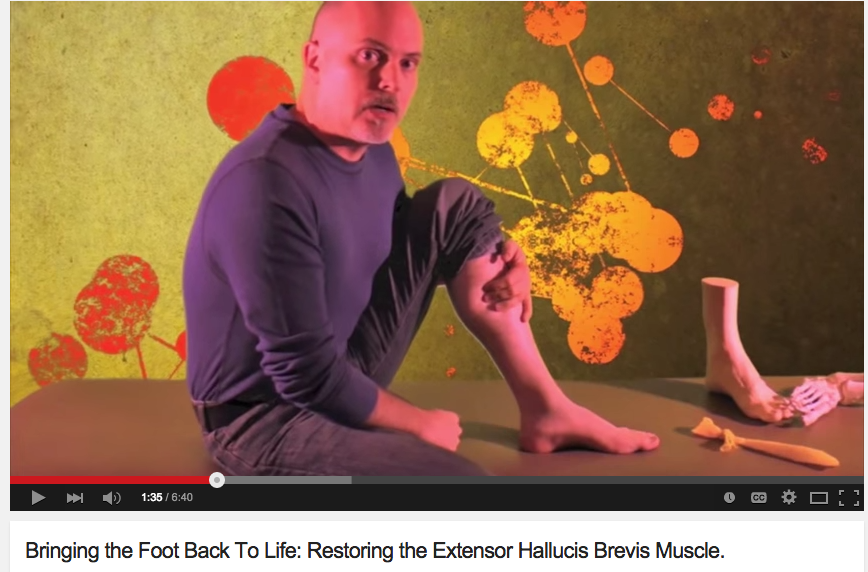If you work in a shoe store, you better understand the real problem behind this frequent shoe breakdown. You have seen it, but do you truly understand it ?
Stripping of the heel counter: a naughty problem. (note the foam break down at the inside heel of the shoe in this photo of an almost new pair of shoes)
Has the inside of the heel counter of your shoe ever looked like this?
Do you know why ? We will tell you why ! * #4 is the lightbulb moment for most people,.
1. you may be lazy and not tie your shoes and try to slip your foot into/out of your shoe without unlacing and re-lacing. This will often fold the top of the counter over upon its self and start some breakdown. Kids are lazy, but so are some adults.
2. your laces may be laced to loosely and your heel is excessively slipping/riding up and down on the heel counter foam/material.
3. you have a nasty Halglunds deformity that is just so big it is creating too much friction.
4. However, there is often a better and more logical reason and it just so happens that it is the one that no one thinks of or understands. Loss of ankle rocker (AKA loss of ankle dorsiflexion. You see, the heel counters job is to gently create counter pressure against the back of the heel/calcaneus so that when the person moves into terminal stance phase of gait (when the heel begins to rise) the heel rise will pull the heel of the shoe up AT THE SAME TIME ! If there is a differential in this time stamp event, then the heel will rise abruptly against a shoe that has not had time to finish forefoot rockering at toe-off through the normal forefoot siping on the outsole. In other words, if ankle rocker/dorsiflexion is less than sufficient the restricted range will necessitate that the heel rise BEFORE it is technically supposed to do so, AND thus, before the shoe will reach its build in rocker that enables the heel rise. The two events have to occur at the same time ! When a person has impaired ankle rocker and thus goes into premature heel rise, the shoe will essentially still be attempting to get to the forefoot rocker built into the shoe (which will lift the heel of the shoe passively). So, if the heel rise is premature, before the shoe gets to the forefoot rocker, the heel will abruptly, yet subtly, slide up the heel counter and shear the foam on the inside of the heel counter. Keep in mind that once the heel slide and the shoe heel counter engage together the shoe will be suddenly thrust into its (the shoe’s) forefoot rocker. But, you should understand that this is premature forefoot loading response, and it has a host of clinical problems that go along with it (ie. metatarsal stress fractures, premature or excessive forefoot pronation, toe clenching etc).
* clinical pearl: this problem often presents with the runner having dorsal foot pain across the top of the foot. The runner will naturally think it is the tightly tied shoes, so the natural solution is to lace the shoes looser and looser (or skip lace) until the point they no longer stay on the foot because of the heel counter sliding. Neither one fixes the dorsal foot pain, because the lacing is not the issue. The astute shoe fitter will realize that this dorsal foot pain is directly related to the loss of ankle rocker, but that is a blog post for another time.
It is natural for runners to try to tie their shoes tighter to stop the feeling of the heel slip but this is not the solution. Ankle strangling is not the solution.
Either the shoe is:
1. not fit properly matching the person’s natural forefoot rocker phase to the shoe’s natural rocker or
2. they have a narrow heel (and thus also need a more appropriately fit shoe)
3. need to learn to lace the shoes properly (this does not mean strangle the ankle, any shoe that needs to be tied that tightly to prevent this phenomenon is not the correctly fitted shoe). Shoe tie tension should be modest, comfortable and not constrictive…… ie hardly noticeable.
OR:
the person needs more ankle rocker ! Which does not necessarily mean more calf stretching. It means EARNING posterior length through anterior strength. Watch one of our solution exercises here . Earn the changes you need, no one wants to have to performs stretches before every run for the rest of their lives. Who has that kinda time ?!
Better yet, why not take our National Shoe Fit Certification Program and learn the truths about shoe fit and clean biomechanics. Or, you can leave the pathology alone and support your friendly neighborhood shoe store and local running injury guru more frequently than usual or than is necessary. Its your money and your time.
Links to the National Shoe Fit certification program:
Gait Guys online /download store (National Shoe Fit Certification and more !) :
http://store.payloadz.com/results/results.aspx?m=80204
other web based Gait Guys lectures:
www.onlinece.com type in Dr. Waerlop or Dr. Allen, ”Biomechanics”
Shawn and Ivo, The gait guys
Sharing the secrets of gait and walking/running biomechanics that you are not taught elsewhere.























